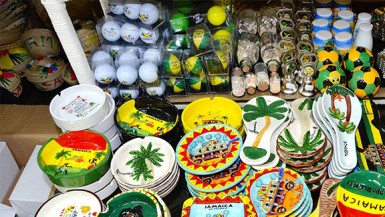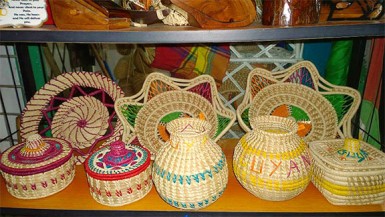Guyana can learn more than a thing or two from the news that this year the government of sister Caribbean Community (Caricom) state Jamaica allocated J$12.8 million to a Craft Enhancement and Business Planning Training Project, which has been set up to improve and strengthen the capacity and business acumen of the country’s producers through increased quantity and diversity of their product offerings to meet, indeed exceed, the demand of the country’s tourist industry.
While the initiative is evidently designed by the Jamaican authorities to ensure high standards in the country’s craft industry as a sub-sector of the tourism sector, there are valuable lessons here for Guyana where the nexus between the craft sector and the fledgling tourism industry is more or less non-existent.
Interestingly, Jamaica has already set the project’s anticipated targets for the 2015/16 fiscal year which have to do with the training and certifying of artisans in the use of indigenous materials. The curriculum related to this goal includes training in the use of fibre material, recycled materials, papier mache, bamboo and textiles. The programme will also include the delivery of four business management workshops.

Another target of the project is the creation of a virtual resource centre through which artisans can market their products, a facility sorely needed but lacking in Guyana.
Arising out of the project, a major exhibition of new products created will be hosted and a website will be created to promote business opportunities. The programme is being executed by the Tourism Product Development Company (TPDCo), with funding from the government and the Organization of American States.

Whilst Jamaica aspires to a craft industry of upwards of J$5 billion the local craft sector is in limbo with state contributions to the industry limited mostly to providing modest partial subsidies for limited numbers of craftsmen and women to attend trade fairs in the Caribbean and North America and the staging of the annual GuyExpo event where local craft must compete with cheaper and frequently less durable Chinese imports bought by vendors and re-sold at the event.
The Guyana Art and Craft Association is, in theory at least, an umbrella organization for crafts men and women, though there are frequent complaints of differences within the organization. Little is known of the outcome of the gesture made to the association some years ago to allocate it a building. What is known is that with no formal home or market from which to ply their trade, local craftspeople, apart from taking every opportunity afforded by public events to market their produce, trade from their homes or else from downtown Georgetown pavements.
The fundamental challenge facing the local craft industry is that, unlike in Jamaica, it lacks official patronage. Instead, local craft, particularly Amerindian craft is frequently held up as an acknowledgement of the country’s indigenous heritage, a gesture that amounts to no more than posturing. Coastal craft producers may have some measure of access to visitor markets and to occasional craft fairs in the region, but logistical limitation means that their access to anything remotely resembling sizeable markets are few and far between.
Just how far ahead of Guyana Jamaica is in the development of its craft industry is evident in a move made by the Jamaican government last year to embark on an ‘authentic Jamaica brand’ which it believes will help improve the competitiveness of the craft market. The move seeks to break the practice of vendors selling the same products as those available in hotels and in-bond stores, which, according to a local official results in “a competitive disadvantage either by proximity or ability to promote,” What the sector is seeking is the creation of an “authentic Jamaica brand” that will showcase images of Jamaica and aspects of its culture and which will be sold exclusively in the country’s craft markets. What Jamaica seeks to do is to ensure that visitors to Jamaica acquire craft that links them to their Jamaica experience.
Part of the focus of the Craft Enhancement and Business Planning Training Project is to ensure that Jamaica is able to provide craft which represents the culture of the island.
The craft industry contributes close to 5 per cent to Jamaica’s GDP.
Here in Guyana nothing has been more favored in respect of the craft industry than the occasional bout of trumpet-blowing. In April 2011, the then president Bharrat Jagdeo pledged to allocate $20 million to revive the craft industry at a Guyana Art and Craft Producers forum where it was officially conceded that the industry was dying. Of that amount $10 million was to have been assigned to a matching grants fund for craftspeople with limited access to financing from financial institutions. A further $10 million was to have been assigned to the creation of a secretariat to house the local art and craft body. More than four years later the arts and craft sector remains unable to secure meaningful access to funding to support the growth of their enterprises whilst there is no evidence of a functioning secretariat from which the Association can operate.
What the Jamaica approach suggests is that the development of a viable craft industry here can only derive from the building of a strong institution underpinned by a strong implementation plan and equally importantly the people with the vision and the know-how to implement it.




